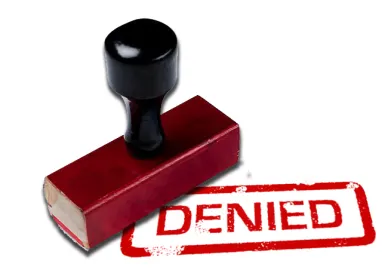In its Decision, the Board denied institution of inter partes review of claims 1, 10, 13, 22, 24, and 25 of the ’715 patent. The ’715 patent is directed to a universal serial bus (USB) controller with a direct memory access (DMA) mode. Petitioner challenged the patentability of the ’715 patent as follows: (1) claims 1, 10, and 25 as obvious over USBN9602 and Intel 8237; (2) claims 1, 10, and 25 as obvious over EIFUFAL501 and Intel 8237; and (3) claims 1, 10, 13, 22, 24, and 25 as obvious over USB97C100 and Dunnihoo.
The Board adopted Petitioner’s proposed construction of “DMA mode” as the “mode where a DMA channel is used as part of the process of transferring USB packets between a USB.” Similarly, the Board adopted Petitioner’s construction of “DMA channel” as “a path for moving data directly to or from memory locations without processor intervention.”
Patent Owner argued that Petitioner fails to demonstrate that USBN9602 and EIFUFAL501 are prior art printed publications. The Board stated that “public accessibility” is the critical factor in determining whether a reference is a printed publication. Petitioner asserted that USBN9602 is a printed publication that qualifies as prior art because it was published before the filing date of the ’715 patent, relying on the dates on the face of the document and the document’s citation in an information disclosure statement (IDS) in an unrelated application as evidence. Patent Owner alleged that none of Petitioner’s evidence establishes that the USBN9602 was publicly available. The Board stated that an IDS citation alone is insufficient to demonstrate that a document is a printed publication, but a copyright notice has been accepted as prima facie evidence of publication. At this stage, the Board was persuaded that USBN9602 is a printed publication.
Petitioner asserted EIFUFAL is a printed publication because the date on the document indicates it was published prior to the ’715 patent. Petitioner relied only on this date. Petitioner’s expert merely testified that the document more than likely was published before the filing date. The Board concluded that Petitioner’s evidence was insufficient to establish a reasonable likelihood that EIFUFAL501 is a printed publication. The Board concluded that Petitioner had not demonstrated a reasonable likelihood of showing that claims 1, 10, and 25 are unpatentable over EIFUFAL501 and Intel 8237.
Petitioner asserted that the combination of USBN9602 and Intel 8237 DMA teach all of the limitations of claims 1 and 25 and that a person of ordinary skill in the art would have combined these references (1) so that the USB controller could be connected efficiently to memories via a DMA controller, and (2) the DMA controller of Intel 8237 would allow the various endpoints of the USB controller of USBN9602 to transfer data to memories within a device or host.
Patent Owner argued that the combination of references does not teach a plurality of USB endpoints, each selectively programmed for one of a plurality of DMA channels during the DMA mode of the USB controller, as recited in claims 1 and 25. Petitioner acknowledged that the limitation may be construed to provide for each USB endpoint to be programmed for a different USB channel, but such an interpretation is not required. Petitioner suggested that it could be construed to provide for each USB endpoint to be programmed for the same DMA channel. The Board disagreed with Petitioner’s construction, noting that it does not comport with the specification. Further, because the alleged combination of references only permits one of the plurality of endpoints of the USBN9602 to be connected to one DMA channel of Intel 8237 at a time, it does not disclose the challenged limitation. The Board also agreed with Patent Owner that an ordinary artisan would not have combined the two references in the manner suggested by Petitioner. Thus, the Board concluded that Petitioner has not established that all of the limitations of claims 1 and 25 are taught or suggested by USBN9602 and Intel 8237.
Regarding Petitioner’s challenge of claims 1, 10, 13, 22, 24, and 25 based on USB97C100 and Dunnihoo, Petitioner argued that Dunnihoo’s “data path is equivalent to a DMA channel because DMA channels are designed to provide a path for data between two memory locations.” Petitioner argued that an ordinary artisan would have combined USB97C100 and Dunnihoo because the USB97C100 controller “will allow virtually any PC peripheral to be placed at the end of a USB connection.” Patent Owner alleged that Petitioner’s construction of a “DMA channel” is not consistent with the specification. Patent Owner alleged that Petitioner has not demonstrated how Dunnihoo’s data path moves data directly to or from memory locations without processor intervention. Rather, according to Patent Owner, Dunnihoo moves data with a processor. The Board agreed with Patent Owner and concluded that Petitioner had not established that USB97C100 and Dunihoo teach or suggest all of the limitations recited in claims 1, 13, and 25. Consequently, Petitioner had not shown a reasonable likelihood of prevailing in its challenge with respect to claims 1, 13, 22, 24, and 25.
LG ELECTRONICS, INC. v. ADVANCED MICRO DEVICES, INC., IPR2015-00329
Paper 13: Decision Denying Institution of Inter Partes Review
Dated: July 10, 2015
Patents: 6,266,715
Before: Brian J. McNamara, Rama G. Elluru, and James B. Arpin
Written by: Arpin
Related proceedings: Micro Devices, Inc. v. LG Elecs., Inc., Case No. 5:14-cv-01012-SI (N.D. Cal.)



 />i
/>i

